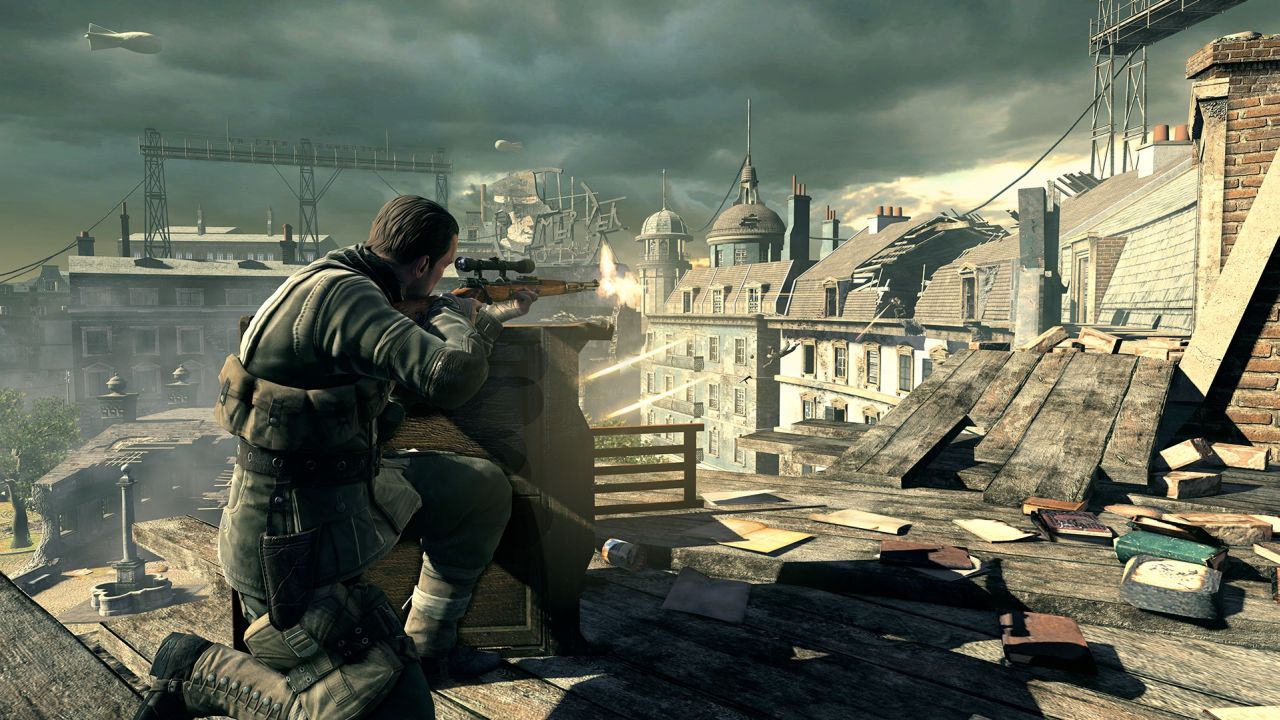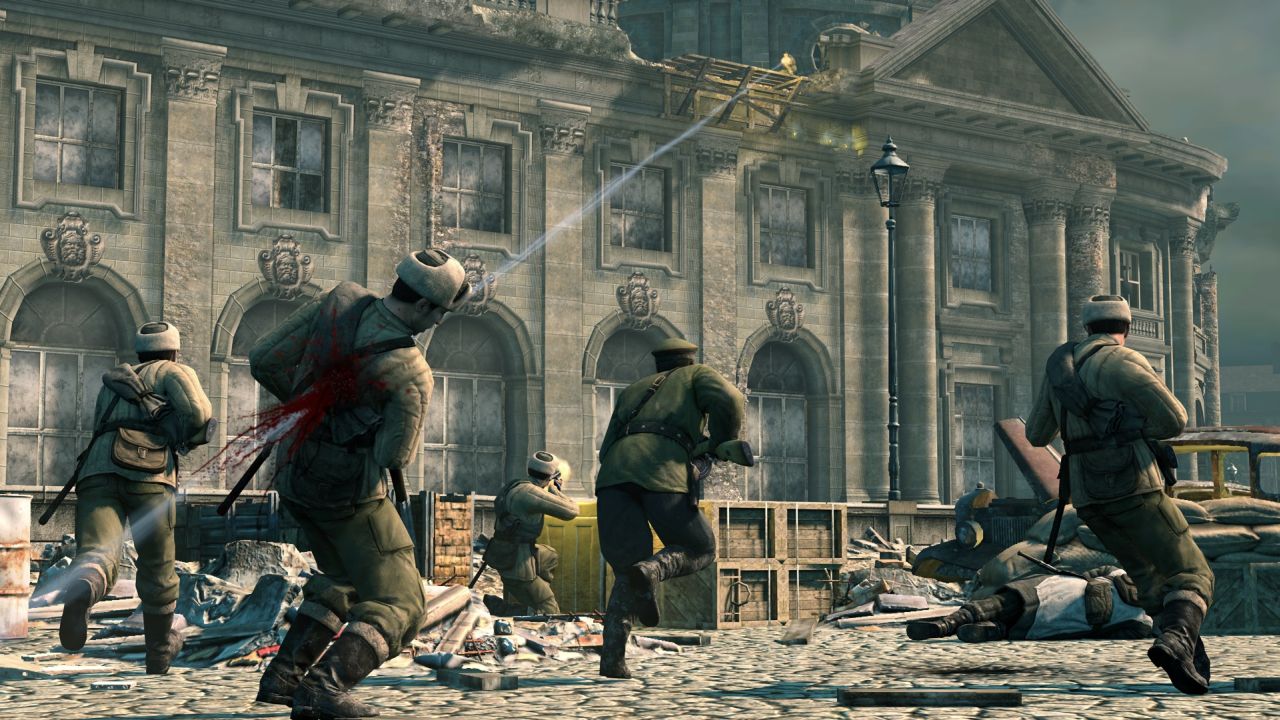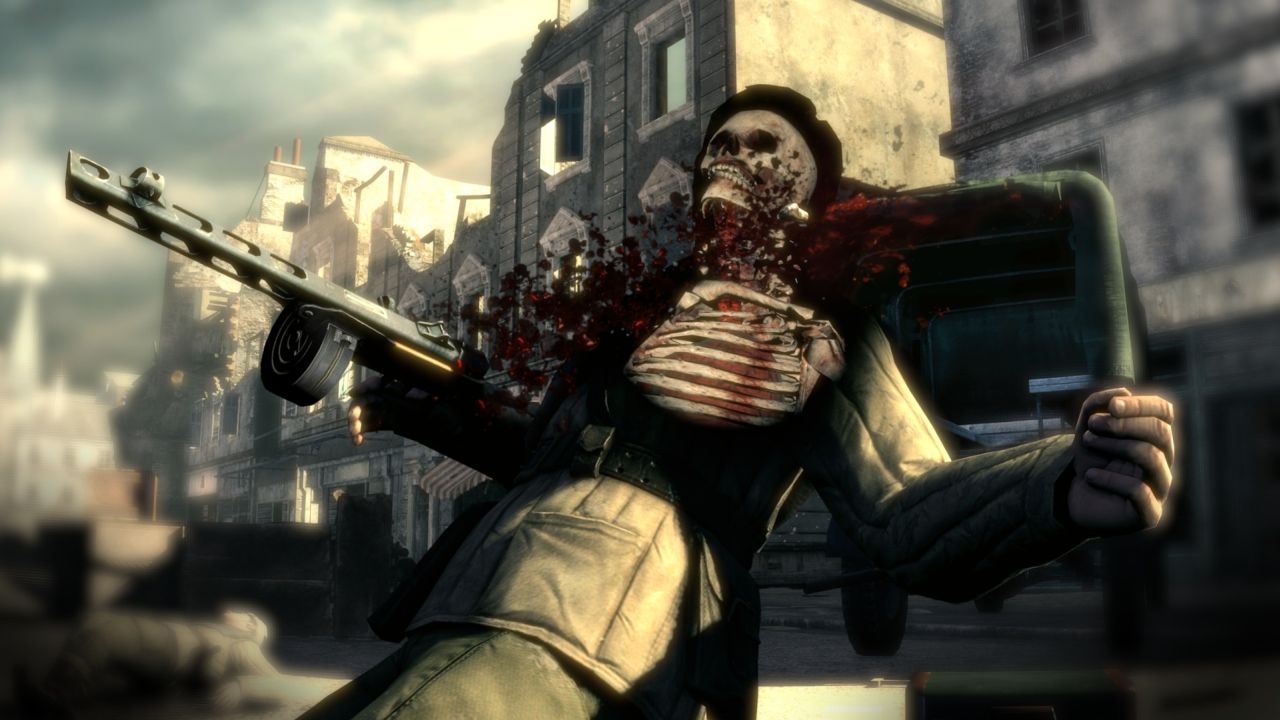Sniper Elite V2 Review
Posted by
SpectralShock
on
The original Sniper Elite from 2005 was an interesting experiment. It was a title that managed to find a niche in the third person shooter genre, which usually caters to wide audiences. Seven years later, the unimaginatively named Sniper Elite V2 has hit stores and brings more World War II era sniping action. Although the core mechanics remain satisfying, along with some neat new effects, the overall gameplay feels unpolished and linear compared to its predecessor.
Players take on the role of Karl Fairburne, an OSS officer who is inserted into Berlin in 1945, during the final days of World War II. Plot revolves around the plan by the USA to recruit the scientists of Nazi Germany before anyone else. Not being a World War expert, I can’t comment on the accuracy of the events that take place so it’s possible the developers took some liberties – a bonus mission has you assassinating Hitler. Whatever the plot devices are though, they serve little more than a vehicle for interconnecting the levels in the single player campaign, which often begin and end fairly abruptly with no indication of how you got there.

Like its predecessor, Sniper Elite V2 is a third person shooter that mainly focuses on sniping. You have the ability to carry three types of weapons at a time. Your sniper rifle, which can only be upgraded/replaced during game-driven cutscenes; a silenced pistol, that also cannot be replaced; and a machine gun. The machine gun is the only weapon that you’re freely able to swap by picking up whatever your fallen enemies were carrying. You can also search most of your victims for ammo and extras – trip wire, land mines, and various grenades. Sniper rifle ammo is always plentiful, but the machine gun rounds are harder to come by so there is a strong focus on sniping even in close quarters.
Many missions involve scouting the area, taking out enemies and eventually reaching your destination, followed by escape. There is some decent variety in your objectives, though the underlying gameplay elements mostly play out in a similar fashion. It takes a while for the levels to become more open, a linearity that is in contrast to the original game. The game often forces the player into linear sections with an increasingly large amount of enemies that results in hallways blatantly littered with bodies. Outcomes of the missions are scored based on how well you did, with results posted on online leaderboards, and there are some arbitrary collectibles to find, giving the campaign slight replay value.
Upon starting any level, using handy binoculars you can zoom further than with your scope and mark spotted enemies, making it easier (at least at first) to assess the situation. That’s where the game presents a choice – spend too much time sneaking your way around a level, or just go in guns-blazing and be on your way after a few minutes of satisfying sniping. In other words, the stealth mechanics in the game are largely broken and it’s questionable if the developers even intended to have stealth as a viable alternative to the straightforward action.
There are a number of reasons stealth doesn’t work. Gone are any indications of your visibility from the first game, instead you only have a radial sensor that points out if an enemy can see you and if they are alert. However, this indicator only works when you’re actually in proximity. Most of the time, due to super-human AI vision, the indicator never appears and you simply begin getting riddled with bullets. Any time you’re spotted, all nearby troops swarm your location and run around between cover, fully aware of your location. Turn a corner, and all seems to be forgotten as you enter a non-alert area. If you lose line of sight, your last known location is displayed as a ghost (similar to Splinter Cell Conviction) as enemies wander around in circles calling you out. Basically, it’s inconceivable that someone would actually try to stealth their way through the game. It takes too long, it’s mostly frustrating due to bad AI, and it doesn’t offer any reasons or rewards for trying whatsoever.

The only times that stealth is viable and also extremely satisfying is during the levels that present a systematic sound barrier that can be used to cover the sound of your rifle. Timing your shots to the church bells or factory steam is immensely satisfying and had the game used this mechanic more often – or created another mechanic on other levels – stealth would have actually been fun.
With all that said, one feature that tries to redeem the game is the core shooting mechanic. Not the machine guns or pistols, mind you, as those feel weak and inaccurate with no option to use iron sights. But the sniper rifles are a joy to use, with realistic bullet drop and scope sway, with wind also coming into effect on higher difficulties. As you hold your breath and line up the headshots, the game really does shine. Sadly, this isn’t nearly enough to excuse the rest of the lackluster features.
There is more to the game after the decently long campaign is complete. PC users can participate in all-out deathmatches (and team deathmatches), with all the intensity that you can imagine when a bunch of snipers decide to out-gun each other in a series of levels where line of sight is crucial. Cooperatively, Overwatch mode puts one player in the role of a sniper that must provide cover fire for your team mate on the ground, which can be cool if executed properly, though the guy on the front line doesn’t have much to do. Kill Tally presents a basic horde mode, while Bombing Run tasks players with fetching parts of an airplane from increasingly distant locations. All of the online modes work well, and though not overly original or full-featured, provide rather competent multiplayer action.

Sniper Elite V2 does look good, its WWII setting actually feeling a bit refreshing due to the recent deviation from this era in gaming. Crumbled buildings and destroyed homes are all well presented, though sometimes lack detail and any environmental impact. Complementing the sniping are extreme kill animations, which look similar to those used by the recent Mortal Kombat. You can watch bullets rip through your enemies (and their insides) in slow motion x-ray detail, and it comes across disturbingly cool. The audio design is basic, with unremarkable voice acting from the few characters – but at least the German and Russian enemies sound authentic. There are no problems with running on top settings even on moderate PC hardware, and the scenery still looks appealing throughout.
So, in a similar way to its predecessor, Sniper Elite V2 does only one thing really well, while the rest of the elements seem to fall by the side. A satisfying and well implemented sniping mechanic can’t hold up the linear level design, AI problems, and unfinished stealth elements. A lot of these issues are avoided during multiplayer, which is actually the unexpected highlight of this otherwise unremarkable experience. Sniper Elite V2 could have been a successful outing for long-distance shooting fans, if all of the game’s content was up to par with the sniping.
